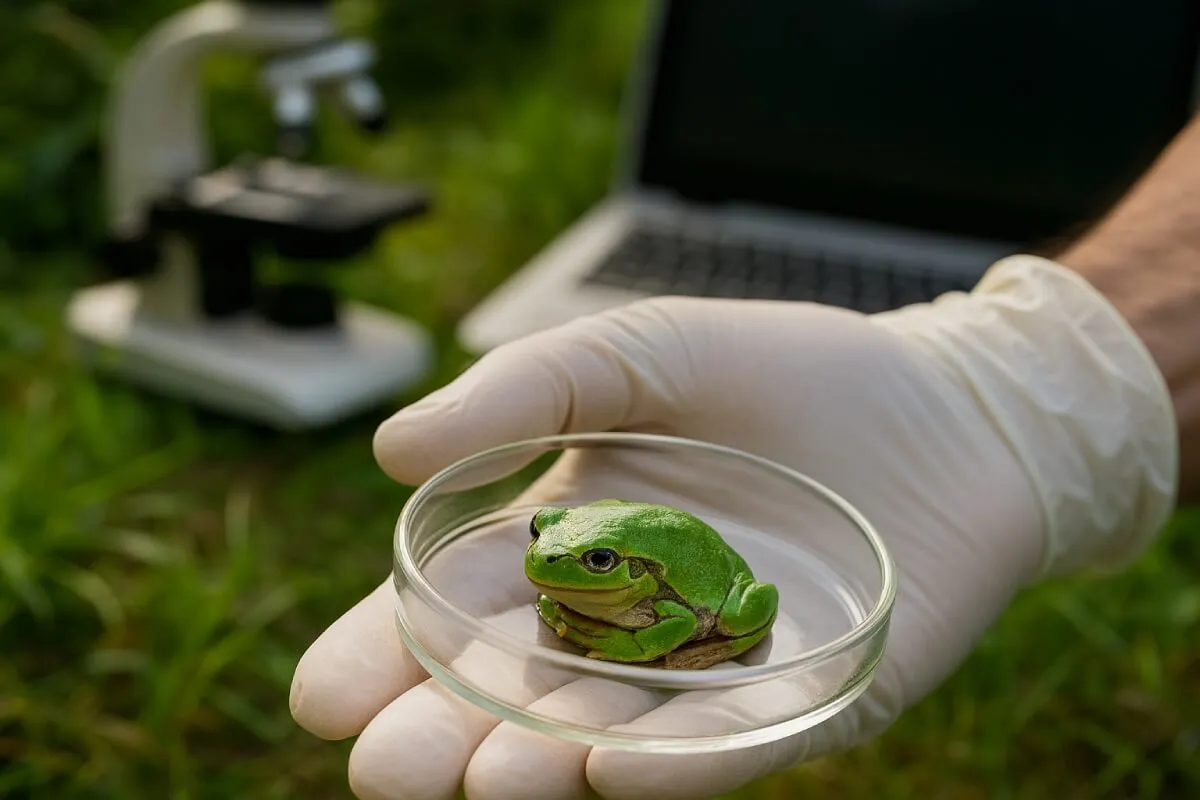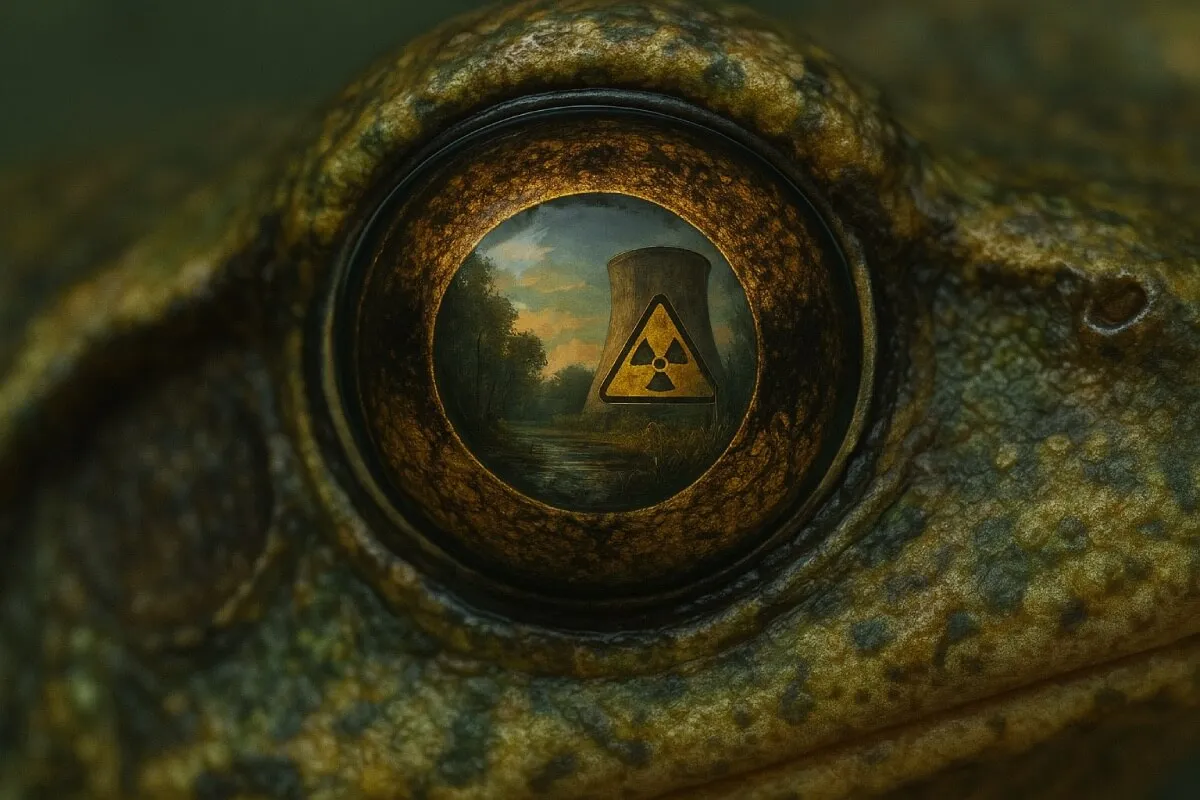A new study has detected alterations in the expression of hundreds of genes in frogs living in areas contaminated by the 2011 nuclear disaster. Although they produce more sperm, scientists warn of possible hidden effects on their fertility and evolution.
For more than a decade, the land contaminated by the Fukushima nuclear disaster has remained under scientific surveillance. But now, new research presented at the annual conference of the Society for Experimental Biology has taken a crucial step forward: observing how radiation affects the reproductive capacity of wild animals surviving there. The focus is on a small but brave protagonist: the Japanese tree frog (Dryophytes japonicus).
What happens to their sperm, genes and hormones after generations in a radioactive environment? What the scientists found is not only surprising, but forces us to rethink how we assess the long-term ecological impact of a nuclear disaster. This, of course, can be extended to other disastrous situations in the nuclear field.
An open-air laboratory in Japan
The Fukushima accident in 2011 released large amounts of radioactive material into the environment. Although many species fled or disappeared, others remained or arrived later, colonising areas where humans no longer live. This new study, led by Léa Dasque (ASNR, France), has taken advantage of this ‘ecological window’ to analyse the consequences of chronic radiation exposure on the reproductive biology of frogs inhabiting these altered landscapes.
The researchers collected specimens of Dryophytes japonicus in areas with different levels of radiation. They focused on evaluating the testicles, sperm, testosterone and genetic activity. In addition, they used transcriptomic tools to observe which genes were being activated or deregulated in relation to radiation.

More sperm, better reproduction? Not necessarily
One of the most striking observations was the increase in the gonadosomatic index (the relative size of the gonads to the body) in individuals exposed to radiation. Higher sperm concentrations were also detected in these animals. On the surface, this could be interpreted as a reproductive advantage.
But the researchers are cautious. Although the quantity of sperm was higher, it has not yet been confirmed whether the quality of the sperm or its ability to fertilise is equally functional. Fundamental characteristics such as sperm motility, a key factor in reproductive efficiency, are still being analysed.
These types of physiological responses may be compensatory mechanisms: when the organism detects a hostile environment, it may invest more energy in reproductive output to ensure offspring, even if this does not guarantee that the sperm will function properly.

Genes speak: radiation leaves a molecular footprint
To understand whether these physical changes were accompanied by alterations at the cellular level, the team sequenced the transcriptome of the frogs, i.e. the set of genes activated at a given moment. More than 9,000 genes expressed in the testicles were identified, and around 10% showed significant alterations related to radiation.
In the words of the original abstract: ‘A subset of approximately 10% of the genes showed a differential expression pattern between the groups exposed and not exposed to radiation.’
This is a significant finding. The affected genes are involved in critical processes such as sperm development, hormone regulation and cell metabolism.
Although functional analyses are still ongoing, some of these genes have already been confirmed to belong to biological pathways sensitive to ionising radiation.
Such alterations can have cascading consequences. Changes in gene expression could compromise fertility, alter the development of offspring or even modify sexual behaviour in future generations.
Testosterone, the big question mark

Despite the effects observed on reproductive structure and function, testosterone levels remained stable between exposed and unexposed frogs. This finding is intriguing, as testosterone is a key hormone in the regulation of sexual behaviour, the development of secondary sexual characteristics and sperm production.
This suggests that radiation does not affect all levels of the endocrine system equally, or that the organism finds ways to preserve certain critical functions through hormonal compensation mechanisms. It could also indicate that other factors—such as oxidative stress or DNA damage—are mediating the biological effects, beyond direct hormonal action.
An altered ecosystem, evolution in progress
The study not only points to immediate impacts, but also opens the door to deeper questions about the long-term evolution of wildlife in polluted environments. Could these frogs be genetically adapting to radiation? What is the cost of such adaptation? What happens to offspring born in these environments?
By focusing on reproduction, the research team touches on a key point. If radiation compromises a species’ ability to produce viable offspring, its continued existence in the ecosystem is called into question, even if it survives physically.
As they explain in the scientific summary: ‘The impact on reproduction is a critical determinant of long-term population viability in contaminated areas.’
Furthermore, these data have value beyond Fukushima. When compared to similar studies in Chernobyl, where effects such as reduced genetic diversity and deterioration in body condition were observed, this work helps to build a comparative framework between different nuclear exclusion zones, providing clues about the tolerance thresholds and resilience of wildlife.
What’s next: more analysis and new species
Although the results are preliminary, the study is ongoing. The team is processing data on sperm motility and plans to expand the analysis to other species, including invertebrates. A more detailed assessment of the molecular mechanisms involved in the observed responses is also expected.
What is clear is that this work demonstrates that chronic exposure to radiation leaves a tangible biological footprint. It is not enough to observe whether a species ‘survives.’ The real question is how it lives, how it reproduces, and what invisible effects are operating at the cellular and genetic levels.
Fukushima, like Chernobyl, thus becomes a living laboratory for exploring the limits of adaptation, the risks of induced mutations, and the complexity of ecological responses to technological disasters.

